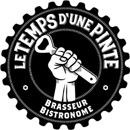Picker responsibilities
-
The picker must comply with all applicable laws and regulations regarding safety and traceability and the products harvested;
-
The picker can deliver fresh mushrooms directly to the processing or packaging plant within 12 hours of collection;
-
If the harvest occurs more than 12 hours before delivery, the picker must have a dedicated refrigeration facility (single-purpose only) to maintain the cold chain and the quality of products;
-
To the same end, the picker wishing to process or package fresh wild mushrooms must obtain and maintain in effect the same permits as processing plants and meet the same requirements.
Picker’s Code of Ethics
The code includes five essential components to guarantee safety and hygiene:
-
Accurate identification of mushrooms;
-
Hygienic conditions at harvest;
-
Handling and tools;
-
Environmental factors;
-
Traceability.
In regard to health and safety conditions, handwashing is advised after using the toilet, smoking, handling a hydrocarbon canister, checking engine oil level, using a chain saw, blowing your nose, eating, etc. Between each expedition, the cloths used for harvesting are laundered; equipment and containers used for the harvest are cleaned and sanitized.
It is therefore very important to preserve cleanliness by:
-
Always removing the base of the stem that was in the ground;
-
Using a clean knife, baskets, and containers;
-
Using moist cloths during the harvest to wipe the mushrooms and one’s hands as needed;
-
Washing hands in soapy water after each forest expedition;
-
Placing the mushrooms with their caps up, so that dirt and particles do not fall into the tubes, gills, or teeth;
-
Keeping a bucket of soapy water in one’s vehicle for washing hands and rinsing dirty cloths after each forest expedition; providing, depending on the type and quantity of the harvest, a second container to replace the first if the water becomes too dirty.
Preservation of quality and cold chain maintenance
Upon return to the vehicle, mushrooms are placed in coolers or styrofoam boxes (commonly used for fish and seafood) with bottles of frozen water (500-600 ml) placed at each end and in the centre if the box is big (more than 60 cm long). Fruit bodies continue growing after they have been picked, completing their life cycle: caps remain open and continue to emit spores and the fruit body’s internal metabolism leads to heat and moisture production. The use of bottles of ice water is to:
-
Cool the fruit bodies to slow their internal metabolism and the development of insects and nematodes they may contain;
-
Absorb the heat from the fruit bodies;
-
Extend the fridge or shelf life of harvested fruit bodies.

If one does not have access to a refrigerated room and the harvest must be delivered the next day to a packaging plant, the frozen water bottles can be changed in the evening and again the following morning. This method of preservation is not recommended for a period of more than 36 hours. If the mushrooms are kept by the picker for more than a 36-hour period:
-
Clean mushrooms covered in a film of moisture (picked in the rain, the morning dew, snow or deep moss) must be completely dried by separating them (without piling them up) on a mesh tray in a refrigerated room or in the shade in a current of air (usually 30 minutes to 3 hours is sufficient). Drying is necessary because bacteria and mould can develop in the film of moisture.
-
Certain mushrooms, such as Lobster Mushrooms, should be washed as soon as possible after picking and immediately placed to drain and dry, as previously described. When the surface water has dried, the mushrooms should be refrigerated again.
Delivery to the packaging plant always takes place in refrigerated conditions, either in a refrigerated vehicle or in styrofoam boxes that include ice packs or frozen water bottles.
Traceability
Early in the season, the picker makes a statement of harvest territory using the attached form. If harvesting outside this territory, the picker commits to separating the mushrooms and declaring the origins at each delivery.
































